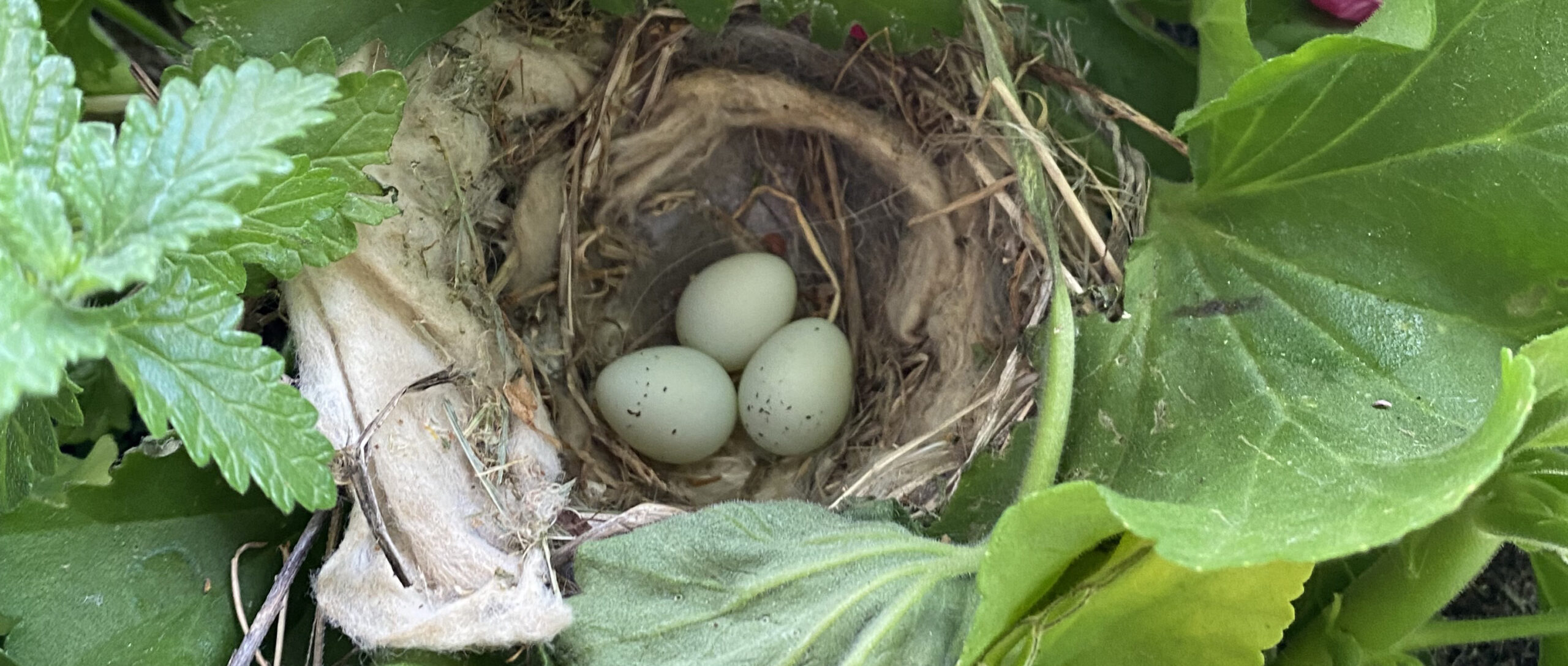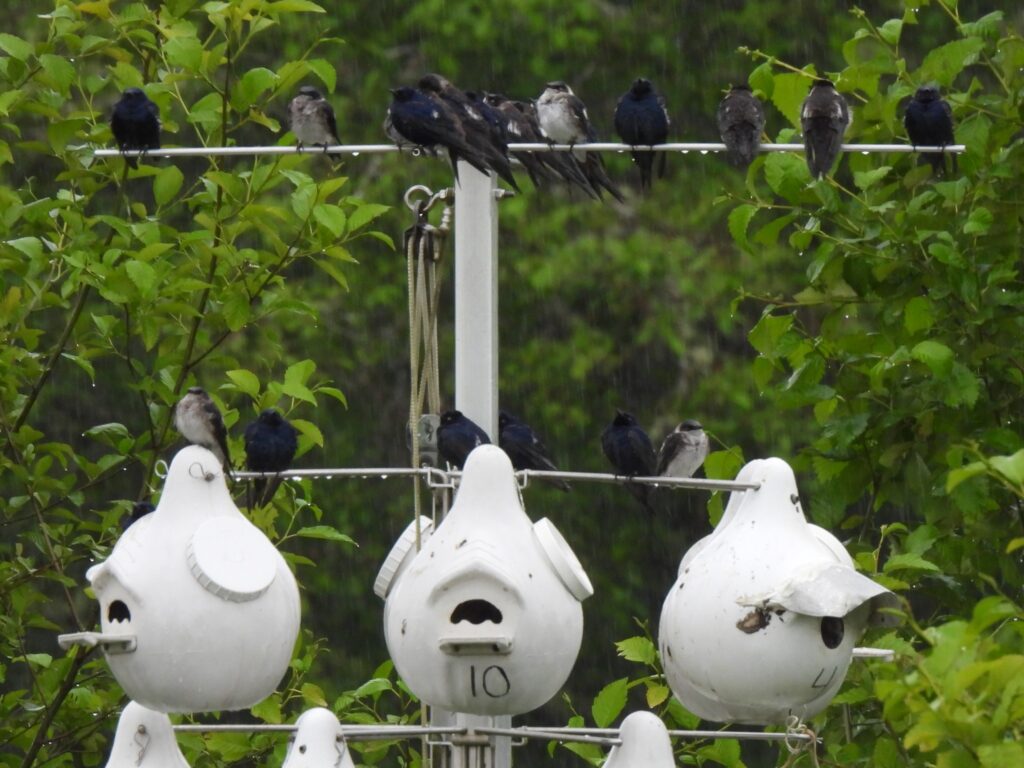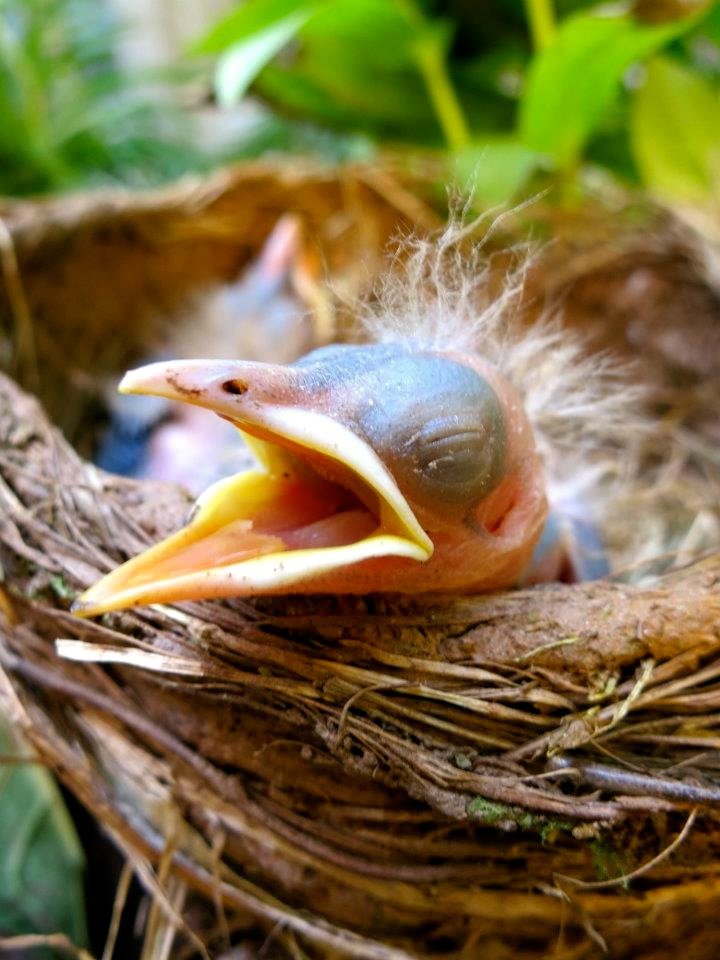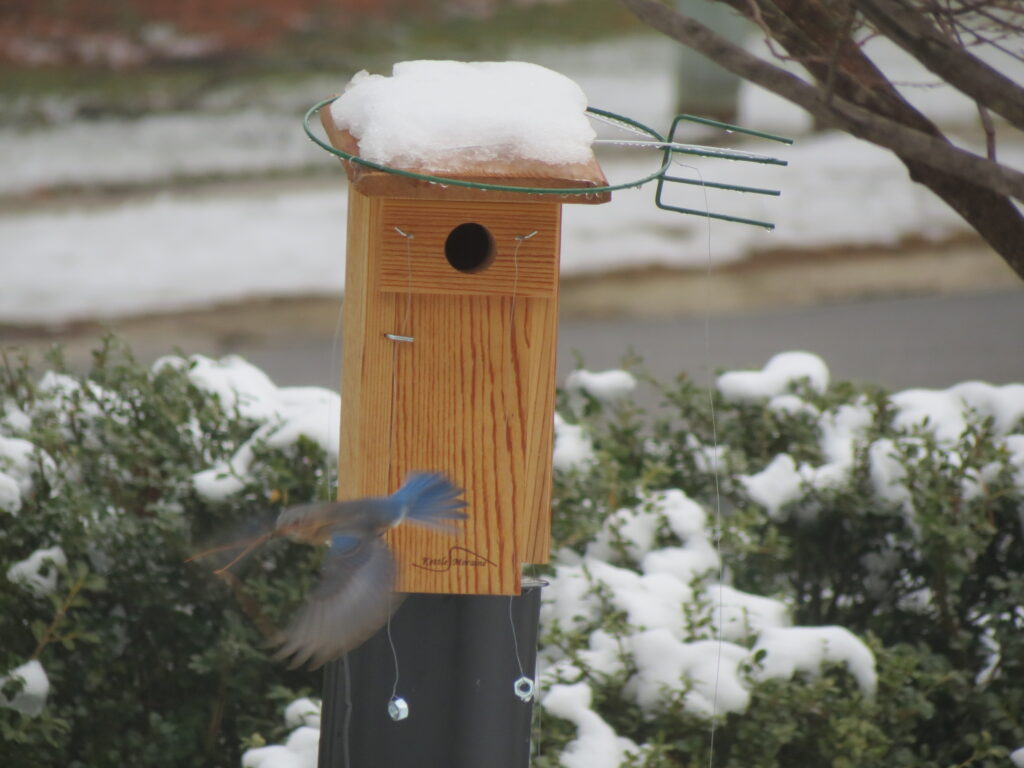 Photo ©
Meg Collins
Photo ©
Meg Collins
By Conor Taff, Research Associate, Cornell University
During cold snaps and heat waves, people often escape to temperature-controlled indoor spaces. Wild animals, like birds, don’t have that luxury and exposure to extreme temperatures can be a major challenge. Coping with bad conditions is hardest during the breeding season, because baby birds can’t leave their nests and must be fed continuously. Cold snaps might be especially hard to deal with, both because they reduce the number of insects available for food and because the youngest birds can’t produce enough heat to keep themselves warm without help from their parents. Some studies show that extreme climate events reduce the likelihood that young birds survive to fledge, but we don’t have a great understanding of how important these events are for different species across large areas or how exposure to this risk might be changing.

Purple (Martin) Rain
Aerial insectivores, like these Purple Martins, are especially sensitive to cold weather because their prey (flying insects) are impacted.
One of the keys to understanding how important extreme events are for birds is describing how often cold snaps and heat waves actually occur during the most critical periods of the breeding season. Each species has evolved to raise their young at a particular time and location that maximizes their chances of success. Generally, this means that birds build nests when there is plenty of food and when temperature conditions are just right. Because of global climate change, however, the relationships between food, average temperature, and variation in temperature have changed dramatically over the last century.
We might expect warmer springs to result in more exposure to heat waves, but an abundance of evidence now shows that many birds are breeding weeks earlier than they used to in order to match their breeding timing with changing temperatures. Breeding earlier in the year, when days are shorter, might paradoxically result in more exposure to cold snaps for some species. In a new study, my colleague and I asked how the timing of cold snaps and heat waves has changed over the last century and whether these events are associated with lower fledging success for common North American birds (Taff & Shipley 2023).

A Shady Spot To Beat The Heat
Average spring temperatures have increased since 1950, but heat waves have not changed in a predictable way. Birds like these American Robins must either cope with temperature extremes, find ways to avoid them, or offset nest losses by attempting additional nests.
In the first part of the study, we used 100 years of temperature data from 3,733 weather stations maintained by the National Oceanic and Atmospheric Administration and by Environment and Climate Change Canada. As expected with climate change patterns, we found that springs are warmer on average now than they used to be, but surprisingly the date of the latest cold snap and the date of the earliest heat wave have not changed in any predictable pattern. This means that over large areas, birds may be more likely to experience extreme temperatures during the breeding season.
Next, we used data from NestWatch (via Cornell Lab of Ornithology), Project NestWatch (via Birds Canada), and Project MartinWatch (via Purple Martin Conservation Association) to look at breeding success for 24 common species (301,514 total nesting records). We found that cold snaps were associated with lower nest success in 16 of 24 species and heat waves were associated with lower success in 11 species. Extreme climate events were especially harmful when they occurred in the short period between when eggs hatched and when nestlings fledged. Species that depend on insect activity for foraging, such as Tree Swallows, Purple Martins, Eastern Phoebes, and bluebirds, were notably impacted by extreme temperatures. Extreme temperature exposure might be one challenge contributing to population declines in many birds.

Spring Snow Is A Setback
A new study found that late spring cold snaps were associated with lower nest success in 16 of 24 studied species. Species that feed on insects were particularly vulnerable.
Our study highlights the complex balancing act that wild birds must make in order to breed successfully. Finding the right match between average temperature, extreme temperature exposure, and adequate food availability is a tight needle to thread in the best of times, and changing climate patterns may force birds to make compromises. Large-scale studies like this are critical to understanding how climate change is affecting birds, but they wouldn’t be possible without the contributions of many participants who monitored nests and shared data. Importantly, our study could only quantify direct effects of extreme temperature (i.e., egg and chick mortality), but there may be other indirect effects (e.g., compromised immunity, reduced body weight) that impact the long-term health of fledglings, meaning that our results may miss some of the subtler implications of extreme temperature shifts.
Reference:
- Taff, C. C., and J. R. Shipley. 2023. Inconsistent shifts in warming and temperature variability are linked to reduced avian fitness. Nature Communications 14: 7400. DOI: https://doi.org/10.1038/s41467-023-43071-y
Is it valuable to order mealworms near nestbox in heatwave /cold snap? Or is that interfering with nature?
I have had bluebirds nesting when we got an ice storm. I always feed mealworms when the Bluebirds are nesting, and they did just fine. I was worried about the cold, but with the adult birds having access to food, they were able to keep their chicks warm. All five baby Bluebirds made it.
We noted the sole remaining adult male dark-eyed junco that we have steadfastly fed from Sept headed elsewhere after his second 40 below Cold snap. The first one he handled was three days long, but this snap started coming on Dec 8, 2023, and i got a pic of him when he came in saturday morning, dec 9, day 2 of cold, he was frosted, near ears, eyes, and below his mouth. The following morning, we did not see him come to the porch where we keep the seed, like normal, only his buddies the chickadees. I finally had to admit he was gone. We are in a very cold narrow river valley which drains into Yukon. we hope and assume he flew out saturday afternoon, toDawson on Yukon, and now following the rivers to his winter rest, wherever that may be. Or, he is now at a feeder in Eagle, Aak, where the temps are much milder along the Yukon, currently are at 37*F. Our temps rose on late sunday. Now we are at zero. Sure miss the fella.
I work with Purple Martin in two different parts of Ohio Extreme weather events were challenging this season.
On South bass island in Lake Erie, unusual, cold snap with snow in May killed many of the returning ASY birds. I retrieved 13 dead ones from my yard. The species rallied with the return of the SY birds, and they actually did very well during the breeding season.
In central Ohio, colonies, suffered a severe weather event that occurred in mid June. Extended rain and cold weather resulted in many hatchlings dying and many eggs unhatched due to adults sustaining themselves and unable to care for their eggs or Young.. breeding season success in central Ohio was much lower than that on the island this season due to this weather event. Some of the birds did try again, and had some extremely late nests.